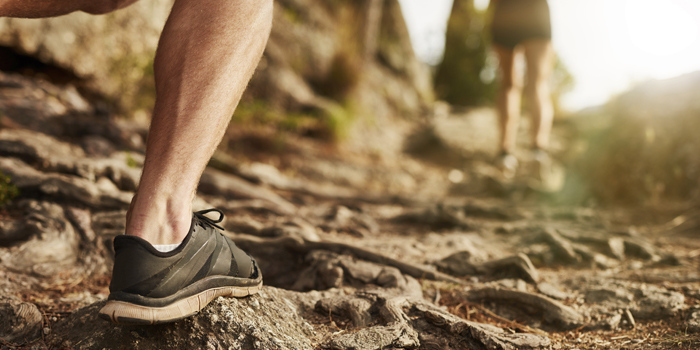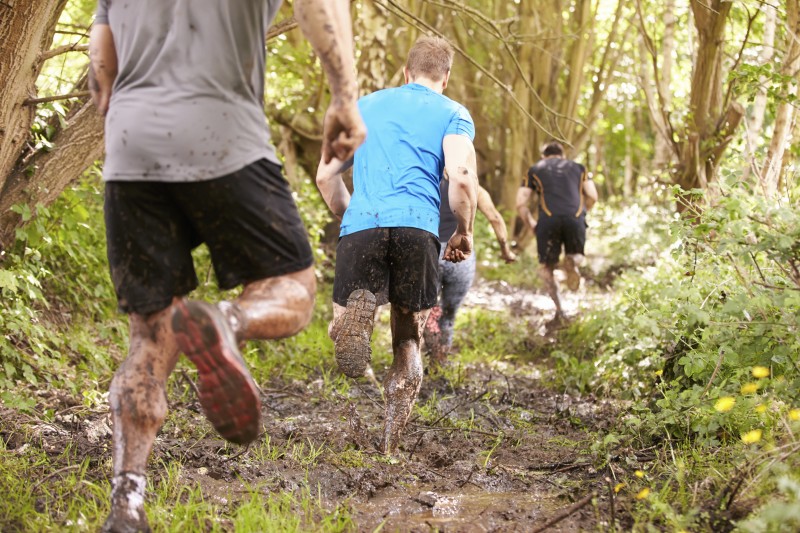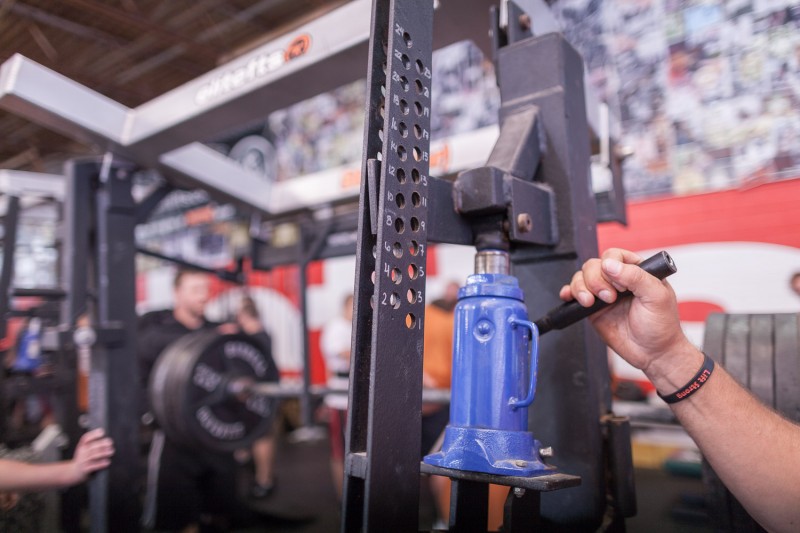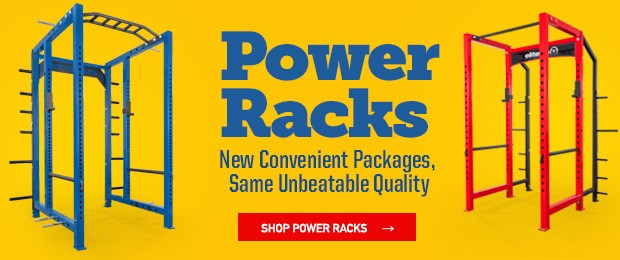
Powerlifting. As far as sports go, it’s the Cat’s Pyjamas, for a multitude of different reasons. First and foremost, you get to eat. A lot. Secondly, sporting a beard is held in extremely high regard due to its ability to a) Add 10% to your total, and b) catch any of the aforementioned food that may miss your mouth when power-shoveling. Thirdly, you get to play bone crushingly heavy music and even create your own signaling to the gods style gesture for every time you bend down to pick up a bar or tie your shoelaces. It’s worth pointing out that only Dan Green can effectively pull this off; an example of where these idiosyncrasies can (and do) go horribly wrong is most notable when witnessing Jimmie Pacifico’s failed attempts to transform into a Power Ranger. (Just kidding, Jimmie)
Lastly, the mother lode and the mentally auspicious prize (were that prize Thor’s Hammer and a lifetime supply of Cinnamon Bun Oreo’s) found at the bottom of a cereal box: you do not have to do cardio. And in fact, doing so in some powerlifting circles is a very good way to lose friends and alienate people.
WATCH: Off Topic with Dave Tate and Jim Wendler — Training for All-Around Fitness
You’re not a runner, an Ironman, or a bodybuilder, and quite frankly it is unconscionable to be expected to suffer as one. We as powerlifters have created a division within competitive sport whereby we can unashamedly award ourselves the moniker of "athlete" and hold our heads high, although in reality I think we would be very hard pressed to sell this notion to anyone but competitive darts players.
Cardio is a bad word. A dirty word.
Some will argue that high rep squats or minimal rest between sets gives them all the cardio they need. Strictly, this isn’t true. Or even close to it. Stepping into the road and nearly getting hit by a bus jacks your heart rate up, but it’s unlikely to do anything for your base aerobic fitness levels. I won’t go into any further detail about venous return when performing the Valsalva maneuver, as those much smarter than myself have already beaten this horse to death — Alex Viada, who I need to give all credit to for my transition into this unique method of hybrid training, Joel Jamieson and Greg Nuckols in particular. But don’t for one second be fooled into thinking you’re getting any real cardiac improvements by taking short rest periods or, you know, going BEASTMODE on your bench/bent row supersets.
No, an aerobic base and all of the benefits it produces for the lifter who wishes to continue to get bigger and stronger is actually quite simple to build.
So who would be interested in an article about cardio for powerlifters, especially one that involves running — or more specifically, off-road/trail running?
Running is widely recognized as powerlifting’s Kryptonite. Loss of gains, stress fractures and shin splints are hardly the type of thing a focussed strength athlete would concern themselves with. But what if what I’m about to suggest would benefit your training and health (and allow you to eat more food)? You won’t have to drop a bunch of weight if you don’t want to. Heck, I'm currently adding mass for a meet in the 242-pound weight class in a couple of months whilst preparing for a trail running competition in four weeks time! (As a side note, this is not normally how I would prep for either event but extenuating circumstances dictate my current protocol).
The big question is, “How can it be done successfully?”
First off let’s discuss why powerlifting and running or biking have a checkered history. These two types of training exist at two opposite ends of a spectrum. This is both a blessing and a curse. Typically the further you run, the more efficient your body wants to make you at running. This means creating a more lithe version of your current self. Generally speaking, the lighter you are, the further and faster you can run. Similarly, when you lift increasingly heavy weights your body’s focus will be on gaining weight (assuming calories are accounted for) in order to accommodate the ever-increasing stress being placed upon it and the mechanical damage that results from lifting with high intensity or volume.
So how do we glean all the benefits of cardio (improved heart function, increased stroke volume, better utilization of lipids for fuel, and improved work capacity) without compromising our strength and size?
It really comes down to two things: calories and programming.
Shocker, right?
Yes, and yet you’d be amazed how well so many are able to fuck this up. Those who have tried to add running or any cardio to their lifting program usually notice sub-par results. Lifts stall or go backwards and injuries crop up. Shin splints and stress fractures all boil down to the fact that you are essentially a 275-pound rhinoceros stomping down the road, applying the same basic principles to this as you do to your lifting. Go hard or go home, right? Wrong.
Imagine how much stress your joints are being subjected to when you decide to hit the pavement for a "quick jog." If you’re weighing 100 pounds more than the average-sized runner, you’re putting your body through some serious trauma every time your foot hits the ground. Combine this with poor technique and you’ll have a recipe for disaster. Is it any surprise that when you go to squat the next day you can barely make it through your warm-up sets? Not to mention the calories you’re burning when you weigh in over 200 pounds. At 230 pounds, I was burning through nearly 1200 calories per hour when I went out on the road. If you want to do this AND make it work, there a few key principles that must be adhered to:
- Eat. This is not the time to start dieting. The cost of the extra work is too high and calories must be consumed to repair the damage done and recover for the next session.
- Get a heart rate monitor. This is probably one of the most crucial keys to success when attempting to implement this type of training. We will discuss how to use this later.
- Get a good pair of shoes. As a heavier individual (over 200 pounds) there will be an incredible amount of force being absorbed by your ankle, knees, hips and back as your foot impacts the tarmac. Now is not the time to join the barefoot movement or buy a pair of Vibrams.
- Be mindful of your form. Keep your elbows tucked in, chest puffed out, and chin up. Take short strides. Keeping your feet underneath you as opposed to striking too far out in front will minimize risk of injury.
- Only run twice per week. Once will be a 30-minute heart rate Zone 4 jaunt on the road and the other will be a 60-90 minute Zone 2-3.5 trail walk/run. Supplement another two days with a 20-minute Zone 2 recovery row and a short interval session on the bike.
We are going to focus on three different types of cardio for which you will need a heart rate monitor. This piece of equipment is essential because it keeps us working within certain intensity ranges. Push too far past your set heart rate zone and you could end up severely impacting your next lifting session. Here’s why-
You may be familiar with type 1 and type 2 muscle fibres. The type one (or "slow twitch") fibres are engaged first in any movement that you make. Imagine holding a cup of coffee. At this point your type 1 muscle fibres are doing the horse’s share of the work. Imagine trying to crush that cup with your bare hand. Now your type 2 (or "fast twitch") fibres are being more heavily called in to action (the ones you use to squat heavy). The harder you squeeze, the more of these muscle fibres you will engage. The same thing happens as you add plates to the bar. More weight or higher intensity means higher recruitment of type 2 muscle fibres.
Let’s say you’re out for a heart rate Zone 2 walk/jog. At this pace you are predominantly engaging your type 1 fibres with very little required from the type 2 muscle fibres. Ultimately this means that when you go and squat later in the week you should be fresh enough to handle the prescribed loads, as you have not completely exhausted your ability to produce a high amount of force. Conversely, imagine you don’t have a heart rate monitor, and you unknowingly begin venturing in to Zone 3,4 or even 5 because you feel good and want to push things a little harder than normal. The muscles that you’re trying to keep fresh for a day of heavy lifting are now being recruited to a much larger degree and subsequently fatigued, depending on the duration and intensity of your session. This could result in a less thanstellar performance at your next workout.
So why trail running then? Wouldn’t that be harder than just jogging round the block? My answer is two fold. Most importantly, I find that for heavier guys, running on concrete for longer than 30 minutes greatly increases the chance for injury or severe discomfort (see shin splints). More often than not we start our run without warming up properly and we go hard out of the gate. Five to 10 minutes later the pain sets in. Repetition of poor movement patterns on the road is a guaranteed ticket to a stress fracture, but in my personal experience, off road running has a very good way of keeping you healthy. For one, the chances are you will not be running for too long before you hit a gate or a hill. In trail running, the smart athletes always walk up hills and make up for the lost time when they come down the other side. Follow suit here and walk. Just be careful about careering downhill too fast after you’ve made your ascent, should you not want to injure yourself or those in front of you (think Indiana Jones being chased by a giant boulder). These short breaks really do make a marked difference to the onset accumulation of running related discomfort. The ever-changing terrain is also terrific in preventing you from striking the ground in the exact same way that you do when running on the tarmac. Provided you don’t twist an ankle, grass and mud also act as superb shock absorbers and are much kinder to the joints than man-made surfaces. As a complete beginner with no real aerobic activity under your belt, you will likely find that Zone 2-3 is a simple walk when on the trails. That’s okay. Be patient. If you hit a flat stretch, allow yourself a gentle jog but be aware that your body will need time to adapt and at no point should you imagine you’re running an obstacle course race.
RELATED: Troubleshooting Knee Pain While Squatting
The second reason is simply that trails are way more fun than being out on the road and time will pass much faster. Yes you will call in to play your type 2 muscle fibres, but provided you walk the hills, this will not impact your lifting too greatly. Just be sure to follow the plan laid out below as written and you’ll be fine.
Understand that as an explosive strength athlete, it is going to be very hard for you to go slow. It’s not uncommon for a client to say to me, "I know I wasn’t supposed to but I felt so good that I decided to just open up my legs and run hard for a couple of miles. It felt great!" When I then contact said athlete to ask how the following max effort lower body session went, I get a very different response. Something along the lines of "FML."
If you’re going to push yourself on a short, hard run or doing a bunch of intervals, do it immediately after a heavy lower body session. I DO NOT recommend doing your intervals on the road. It’s a great way to blow out a hamstring. Keep to the bike or Rower. Consolidate these particular stressors all in to the same workout and then allow proper recovery to take place. And keep your long run/trail work as far away as possible from lower body days that have you doing multiple sets and reps. Volume leg work via heavy lifting does not couple well with long runs if performed on the same or on consecutive days.
Finally, the training method you use will be a huge factor. Our "cardio" is grouped into volume and intensity work. The lifting should ideally do the same. This program has the volume grouped in to the first three days of the week. For the remainder of the week, the intensity ramps up but the volume comes down.
Here is a sample of a microcycle I have used personally and with clients with great success:
Monday
- Squat/Deadlift 3x8-10 at 70% of 1RM
- Bench 3x8-10 at 70% of 1RM
- Weighted Chins 3x8-10/Unweighted 50 Total Reps
- Side Raises 3x10
Tuesday (Optional Accessory Work)
- Rope Pushdowns 3x15
- Dumbbell Hammer Curls 3x15
- JM Press 3x15
- Straight Bar Curl 3x15
- Easy Ride/Row/Elliptical 20-30 mins (Zone 2)
Wednesday
- Long Slow Trail Walk/Run 60-90 minutes (Zone 2-3)
Thursday
- Bench to a heavy set of 1, 3 or 5 reps
- Bench 2x5-6 at 75-80%
- Bent Over Rows 3x6-8
- Behind the Neck Press 3x6-8
Friday
- Squat/Deadlift to a heavy set of 1,3 or 5 reps
- Front Squat/RDL 4x5-6 @ 85%
- Back Extensions/Hanging Leg Raises 3 x 12-15
- Bike Intervals
Saturday
- 30 Minute Tempo Road Run (Zone 4)
Sunday
- Off
The assistance exercises are just suggestions and can and should be rotated as you see fit. Monday's percentage work should see you increase the weight on the bar when all three sets feel ridiculously easy. Also, it is not recommend going for true maxes later in the week. A good rule of thumb is to ensure the weight is heavy, but not so that your form breaks down badly or requires a real grind to lock the weight out. You can certainly periodically test your 1RMs and change your percentage based work according to the outcome, but I would advise against maxing out too often.
When it comes to your interval session on the bike, I like to use a 30-seconds-on to 30-seconds-off protocol. Start with five intervals and increase by one per week until you’re performing 10 sets. From here, you may choose a different interval workout or aim to increase your speed on the intervals.
Remember to keep your trail sessions, recovery rows/rides, and tempo sessions in the prescribed heart rate zone. Do not be tempted to push harder, should you care about concurrently building greater strength and fitness levels.
Real strength means not only being able to bench big but also being able to haul ass when you need to.
So there it is. Now go pick up a bar then go grab your sneakers and pick up your feet.
Pete Stables is a Strength & Conditioning coach from the UK and a competitive Powerlifter, taking the BPU British Record in 2014 for the 100kg Raw with Wraps Class. He is also a Nutrition Consultant and author of the best selling Ebook 'The Skinny Guys Guide to Building More Muscle'. He can be contacted through his website southpawpower.com.













Quick question - does it have to be soooo long? I have had pretty good results doing multiple 10-15 min jogs multiple days per week (ie: morning and night). The shorter efforts don't seem to muck up my lifting.
I can definitely recommend running on trails - much easier on the knees (they start screaming at me after 5 mins if I road run)
At 40 (now 41) I started competing in Powerlifting. I want to continue to do so but also continue to do at least 1 mud run a year, you know, just in case the zombie apocalypse happens. Being a NYer I spend most of the winter just lifting and start some easy to moderate trail running during the better whether.
It seems that being a pure Powerlifter or Runner is not the answer to overall good health. As I get older, this will become a more important goal then my PL total or Mud Run time; optimal health will be the focus. So the age old question is: how to achieve optimal health while staying relatively strong and reasonable fit??? Love to see an article on this.
I have now kinda got the lifting bug, but I need to work out how to make lifting gains without compromising my half marathon times.
Have cut my runs down to just 2 a week - long run on Sunday (couple of hours) and intervals on Wednesday.
I do some circuit training Monday (always tough after my hard Sunday run) and am lifting on Tuesday, Thursday and Saturday. Friday off.
Does this sound like a plan which would work?